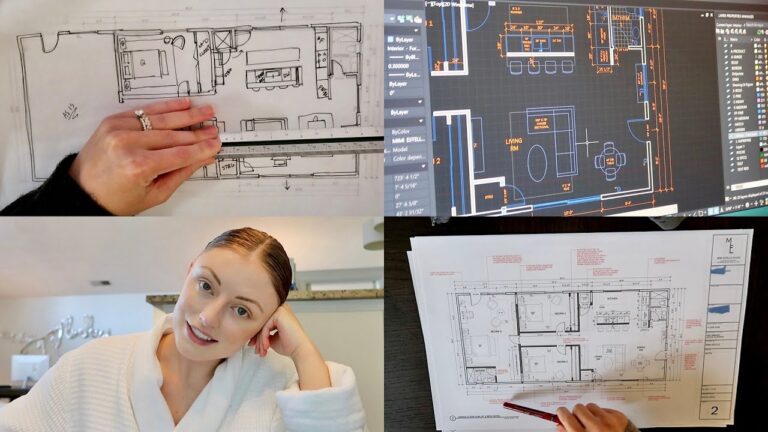Creative Designers Wanted! Competitive Salary.

Graphic Designer Job Description Template
Graphic Designer Job Description A graphic designer is a creative professional who combines art and technology to communicate ideas visually. They use various software tools and techniques to create visual concepts, layouts, and designs for print and digital media. The primary responsibilities of a graphic designer include understanding client requirements, brainstorming and creating design concepts, and presenting them to clients or stakeholders. They work closely with clients to determine their needs, objectives, and preferences, and then translate these into visually appealing designs. They may also be responsible for managing multiple projects and ensuring that deadlines are met. In addition to technical skills, a graphic designer should have a strong understanding of color theory, composition, and typography. They must also stay updated with the latest design trends and software tools. Attention to detail and the ability to work well under pressure are important qualities for a graphic designer. Graphic designers can work in various industries such as advertising, marketing, publishing, and web design. They may be employed by design agencies, in-house design departments, or work as freelancers. They often collaborate with other professionals, such as copywriters, photographers, and web developers, to create comprehensive visual solutions. Overall, a graphic designer plays a crucial role in visually communicating messages and creating a strong brand identity. Their ability to effectively blend creativity with technical skills makes them valuable assets in today’s visually-driven world.Graphic Designer Responsibilities
Graphic Designer Requirements
How Much Does A Graphic Designer Make?
Graphic Designer Salary
| Experience Level | Salary Range |
|---|---|
| Entry Level | $35,000 – $50,000 per year |
| Mid-Level | $50,000 – $70,000 per year |
| Senior Level | $70,000 – $100,000 per year |
A graphic designer’s salary can vary depending on their experience level. Entry-level graphic designers typically earn between $35,000 and $50,000 per year. Mid-level designers, who have gained more experience, can expect to earn between $50,000 and $70,000 annually. Senior-level graphic designers, with extensive experience and expertise, can earn between $70,000 and $100,000 per year. It’s important to note that these figures can vary based on factors such as location, industry, and the size of the company.
Graphic Designer Salaries by Country
Top Paying Countries for Graphic Designer
| Country | Average Salary (USD) |
|---|---|
| United States | 60,000 |
| Switzerland | 55,000 |
| Australia | 50,000 |
| United Kingdom | 45,000 |
| Canada | 40,000 |
Graphic designers in the United States earn the highest average salary, followed by Switzerland, Australia, the United Kingdom, and Canada. The demand for graphic designers is high in these countries, and their job responsibilities include creating visual concepts, designing layouts, and producing graphics for various mediums. With the continuous growth of digital platforms and the need for visually appealing content, the demand for skilled graphic designers is expected to increase further. The salaries mentioned are approximate figures and can vary based on factors such as experience, industry, and location within the country.
A video on the topic Graphic Designer
Video Source : Abi ConnickInterview Questions for Graphic Designer
1. What inspired you to become a graphic designer?
I have always had a passion for art and design. Growing up, I loved drawing and creating visual compositions. As I learned more about the field of graphic design, I was inspired by the ability to communicate messages and evoke emotions through visual elements.
2. How do you stay updated with the latest design trends?
I stay updated with the latest design trends by regularly following design blogs, websites, and social media accounts of influential designers. I also attend design conferences and workshops to learn from industry experts and network with other designers. Additionally, I constantly explore new design techniques and experiment with different styles to stay ahead of the curve.
3. Can you describe your design process?
My design process typically starts with understanding the client’s requirements and target audience. I then conduct research to gather inspiration and insights. Next, I brainstorm ideas and sketch out rough concepts. Once I have a few strong concepts, I move on to the digital phase where I create the designs using software such as Adobe Photoshop or Illustrator. I iterate and refine the designs based on client feedback until we achieve the final result.
4. How do you handle constructive criticism of your designs?
I believe that constructive criticism is essential for growth as a designer. When receiving feedback, I remain open-minded and receptive. I carefully listen to the client or team member’s suggestions and try to understand their perspective. I ask clarifying questions to gain a deeper understanding of their needs and concerns. I then use this feedback to make necessary improvements and ensure that the final design meets the client’s expectations.
5. How do you manage your time and prioritize your design tasks?
Time management and prioritization are crucial in the fast-paced field of graphic design. I start by creating a detailed project timeline and breaking down tasks into smaller, manageable chunks. I prioritize tasks based on deadlines and client requirements. I also allocate extra time for unforeseen challenges or revisions. To stay organized, I use project management tools and regularly reassess and adjust my schedule as needed.
6. Can you provide an example of a challenging design project you have worked on?
A challenging design project I worked on was creating a brand identity for a startup company with a limited budget and a tight deadline. To overcome these challenges, I focused on effective communication with the client to understand their vision and goals. I utilized efficient design processes and tools to streamline the project. I also collaborated closely with the client and provided regular updates to ensure that we were on the same page throughout the project.
7. How do you ensure that your designs are accessible to a diverse audience?
Ensuring accessibility in my designs is important to me. I pay attention to factors such as color contrast, font legibility, and proper use of alt text for images. I also consider the principles of universal design to create designs that are inclusive and user-friendly for individuals with disabilities. Regular user testing and feedback from diverse users also help me identify and address any accessibility issues in my designs.
8. What software and tools do you typically use in your design work?
I have expertise in using Adobe Creative Suite, including Photoshop, Illustrator, and InDesign. These software are industry-standard tools for graphic design. I also use prototyping tools such as Adobe XD or Figma for creating interactive designs and prototypes. Additionally, I am proficient in using tools for project management and collaboration, such as Trello or Asana.
9. How do you ensure that your designs align with a client’s brand identity?
To ensure that my designs align with a client’s brand identity, I start by thoroughly researching and understanding their brand guidelines, values, and target audience. I maintain open communication with the client throughout the design process, seeking their input and feedback at every stage. I also create mood boards and style guides to ensure consistency in visual elements such as colors, typography, and imagery. Regular collaboration and revisions help me refine the designs until they accurately represent the client’s brand.
10. Can you describe a time when you had to work under pressure to meet a tight deadline?
Working under pressure and meeting tight deadlines is a common occurrence in the graphic design industry. One such instance was when I had to design promotional materials for a major event with a very short turnaround time. To meet the deadline, I prioritized tasks, eliminated distractions, and maintained focus. I communicated with the client and team members effectively, ensuring that everyone was aware of the urgency. By working efficiently and staying organized, I successfully delivered the final designs before the deadline.






